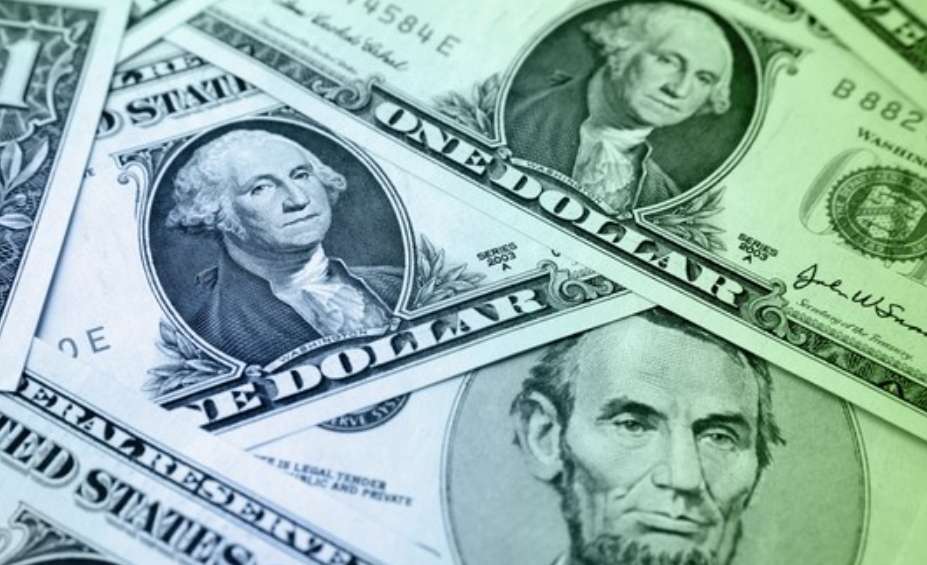US Debt vs. China’s Reserves: A Race to Depletion?
Advertisements
The ongoing decline of the offshore Chinese yuan has sparked a wave of commentary suggesting that China's position in the ongoing financial skirmish with the United States is precariousMany voices in the financial sphere are now promoting the dollar and U.Sassets as a safer bet, leading to increased scrutiny of the economic war between these two powers.
At present, the question arises: Where do we stand in this financial and currency conflict? What do the depreciating yuan and appreciating dollar signify? The unwarranted optimism surrounding the U.Sstock market appears to be shifting alongside these trends, particularly with rising interest rates weighing heavily on liquidity and investor confidence.
Recent reports from The Wall Street Journal highlight the concerns of top Goldman Sachs traders who have issued stark warnings about the current trajectory of U.SequitiesThe S&P 500 index has seen four consecutive days of decline, marking the longest end-of-year diminishing streak since 1996. Such a downturn reflects a growing skepticism about the U.S
stock market's prospects for 2025, raising alarms among market participants.
Statistics compiled by Goldman Sachs reveal that short-selling activity against U.Sstocks is on the rise, indicating a potential liquidity crisis in the marketThe increase in short positions paired with a significant reduction in long positions suggests that the tide is turning against further investment in American equitiesDespite the absence of drastic declines thus far, the prevailing conditions suggest difficulty in sustaining bullish strategies, particularly as the Federal Reserve remains steadfast in its objective to maintain elevated interest rates to reinforce the dollar's dominance in the global financial arenaThis strategy is likely to draw substantial liquidity out of the marketAdditionally, the potential for a rate hike from the Bank of Japan looms on the horizon.
As of December 31, 2024, reports indicate that the U.S
- US Debt vs. China’s Reserves: A Race to Depletion?
- Did you make money in the A-shares in 2024?
- How to Handle a Market Crash
- What’s Causing Volatility in Asian Markets?
- AI Progress: Models No Longer the Bottleneck
dollar index continues to climb, reaching a high not seen since early 2024. Yet, concurrently, the Nasdaq and Dow Jones indices are experiencing various degrees of declineWhile the financial markets show signs of volatility, the underlying economy of the United States exhibits troubling signs of acceleration in decline.
This downturn can be attributed to the Federal Reserve's primary focus on combating inflation while securing the dollar's position in the global currency hierarchyHigh interest rates are leading to widespread bankruptcies among companies reliant on financing, creating a ripple effect throughout the economy.
The resulting adverse impact contributes to a disturbing increase in homelessness: the number of unhoused individuals in the United States surged by 18% in 2024, with official estimates placing the total at around 771,480. However, various American media outlets suggest that the actual figures could be significantly higher, illuminating the disparity between the official narrative and ground reality.
This discrepancy provides a tangible reflection of the current U.S
situation, which starkly contrasts the robust portrayal depicted by the stock marketThe growing confidence of many short-sellers in the market may stem from these conditions, reinforcing their resolve to bet against U.Sequities.
Despite substantial investment fever surrounding artificial intelligence and its purported capacity to reshape the American economic landscape, this speculation lacks foundational verificationInvestment enthusiasm is waning as traders remain alert to the changing economic tide.
Meanwhile, a colossal $50 trillion in U.Sdebt presents mounting challenges for financial institutionsAccording to Bloomberg's December 31 report, primary dealers of U.STreasury bonds express that the pressures associated with bond issuance are intensifyingWith the repurchase rates of U.Sdebt skyrocketing, some hedge funds are contemplating reducing their exposure to this area, leading to a sell-off of U.S

Treasury bondsHowever, liquidity among the banks tasked with absorbing these bonds has dwindled.
These primary dealers, elite entities from Wall Street, serve as gatekeepers of U.Sgovernment bondsEstablished in 1960 by the New York Federal Reserve, their purpose was to backstop the issuance of Treasuries—ensuring that any bonds that failed to sell at auction would be purchased by these institutionsToday, the scope of U.Sdebt nears $50 trillion, exerting unsustainable pressure on these primary dealers, who can no longer support the hefty influx of bonds due to insufficient liquidity.
In fact, from 2014 to 2024, U.Sdebt issuance increased threefold, and projections suggest that by 2025, the national debt could easily surpass the $50 trillion markRegulatory bodies appear powerless to inhibit the ongoing expansion of U.SdebtThe government’s borrowing needs continue to swell, exacerbated by the demands of geopolitical conflicts, including those in Ukraine, which require substantial financial backing.
The situation surrounding U.S
debt resembles the dynamics seen during the Vietnam War—characterized by excessive expenditure with little return on investmentAlthough direct military engagement may be absent, the U.Seconomy finds itself enmeshed in a financial quagmire, perpetuated by costly military support and aid.
Since 2022, Ukraine has consumed significant American assistance, yet progress on the battlefield has been elusive, leading many to question the efficacy of this military support, which may ultimately prove fruitless.
Should geopolitical tensions remain stable in the coming two to three years, the prospect of U.Sfiscal imbalance appears increasingly dire.
Amid an increasingly precarious global financial landscape, the Chinese yuan has been experiencing considerable downward pressure in recent weeks, even dipping below the 7.36 thresholdDespite this depreciation, the determination of the Chinese central bank to uphold the yuan's value remains unshaken, as indicated by the central bank's published midpoint rate.
This situation mirrors not merely a conflict over currency stability but a broader monetary war—an extended game of endurance to see who falters first: the U.S
Leave a Reply
Your email address will not be published. Required fields are marked *